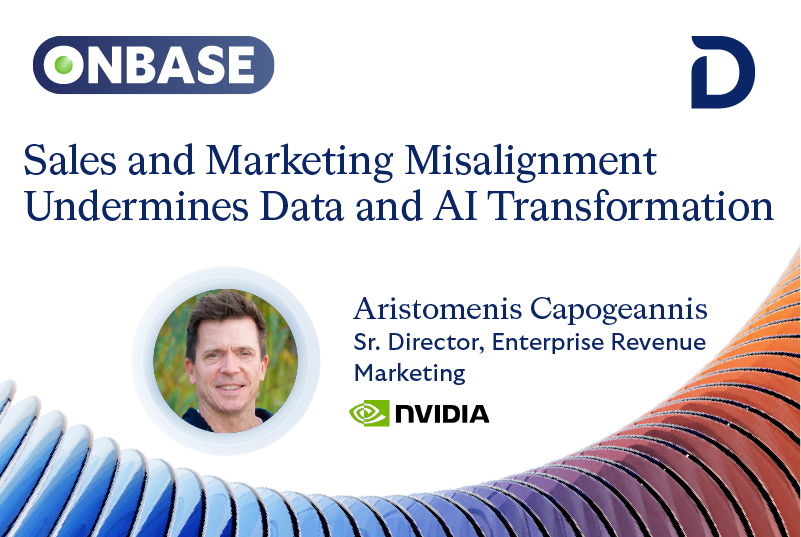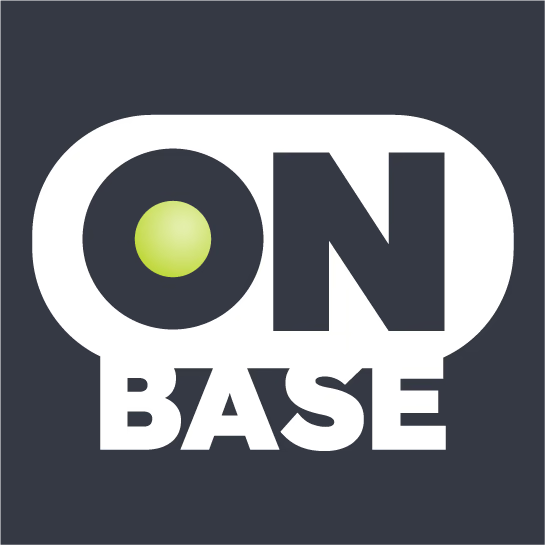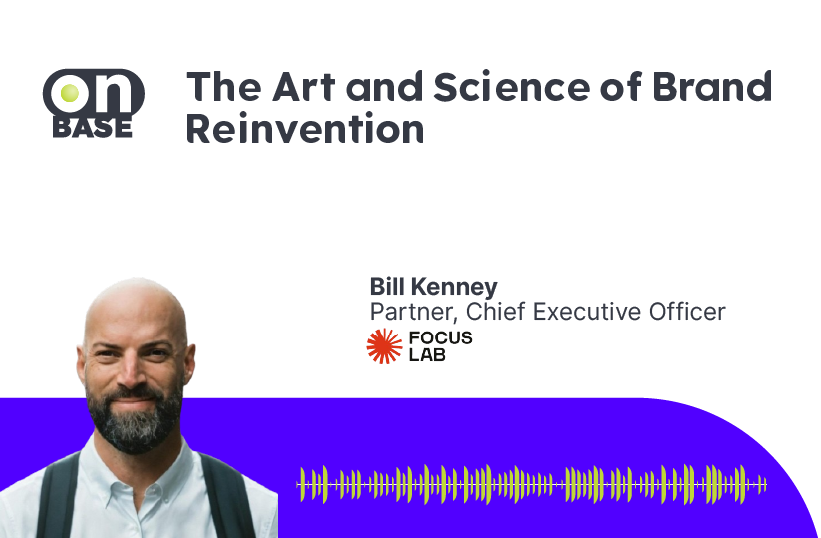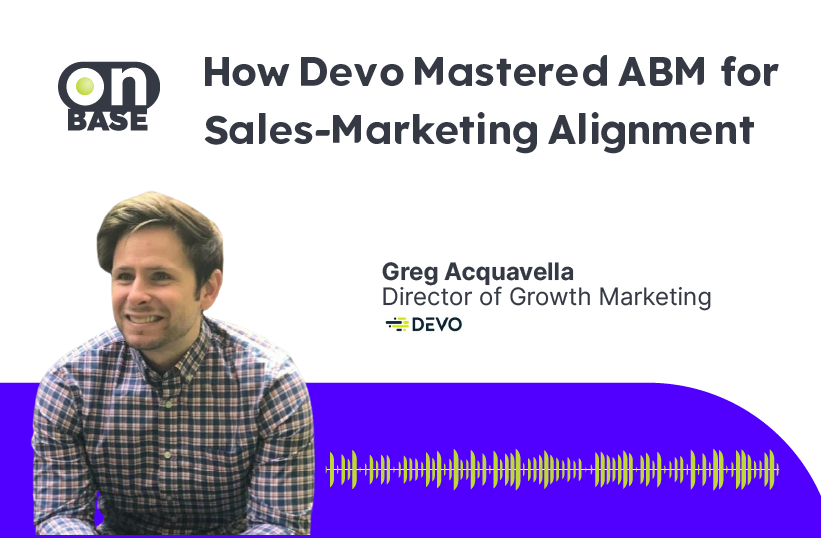
How Sales and Marketing Misalignment Undermines Data and AI Transformation
Shownotes
In this episode of OnBase, host Chris Moody interviews Aristomenis Capogeannis on the critical role of aligning sales and marketing for successful data and AI transformations. Ari explains that misalignment can increase costs and damage competitive advantage. He emphasizes the importance of a unified “single source of truth” to enhance collaboration and avoid redundant efforts. Ari suggests that innovation often requires a fresh look at existing technologies, not just new tools, and recommends books like Crossing the Chasm and The Four Agreements for personal and professional development.
Best Moments
-
Ari describes his journey into data-driven marketing and the importance of aligning marketing with sales and other departments.
-
Ari highlights how misalignment between sales and marketing can harm brand reputation and increase costs due to duplicated efforts.
-
Discussion on the importance of a single source of truth for data, allowing better alignment and collaboration within an organization.
-
Ari shares insights into what executives need from data, emphasizing simplicity and focus over data overload.
-
Ari talks about innovation, challenging the notion that it requires new technology and suggesting instead a rethinking of existing resources.
-
Ari shares his go-to resources, mentioning Crossing the Chasm and The Four Agreements as key books for mindset and strategy.
-
Ari discusses the value of fresh perspectives from individuals new to the field, noting how they can inspire innovation and fresh ideas.
About the guest
Aristomenis Capogeannis is the Senior Director of Enterprise Revenue Marketing at Nvidia. With over 20 years of experience, Ari is an expert marketing technologist focused on demand creation and marketing led growth via data-driven strategies. He has successfully led marketing transformations from an operations and organizational standpoint, delivering growth and subsequent marketing attribution to pipeline driving acquisition and funding milestones in the Financial SaaS, Robotic Process Automation, and Networking industries.
Connect with Aristomenis Capogeannis
Key takeaways
- Misalignment between sales and marketing can hinder data and AI transformation, increasing costs and harming competitive advantage.
- A unified “single source of truth” is essential for effective collaboration and reducing redundant efforts.
- Successful data-driven strategies require actionable insights that resonate across all levels, especially at the executive level.
- Innovation often involves leveraging existing technologies more effectively rather than constantly seeking new tools.
- Bringing fresh perspectives and talent can provide novel insights and boost organizational growth.
Quotes
“Misalignment between sales and marketing can turn your brand into the spammy brand nobody wants to talk to.”
“Innovation doesn’t always mean buying new technology. It often requires stepping back and rethinking how to better use what you already have.”
Highlights from this episode
What led you to your role in data-driven marketing?
Ari described his path as an unconventional mix of gut instinct and a passion for problem-solving with data. He began with demand generation, then transitioned into roles where he managed both sales and marketing teams. This unusual setup provided insights into how intertwined sales and marketing could be when properly aligned. As he progressed, Ari saw how data could be a powerful tool for organizational growth beyond marketing. At Nvidia, he established the revenue marketing function, which emphasizes predictability, scalability, and the use of data to create revenue-driving strategies. He highlighted that his focus is not just on data collection but on making data actionable across the organization, aligning it with both sales and marketing for maximum impact.
How does misalignment between sales and marketing affect data and AI transformation projects?
Ari highlighted that sales and marketing often operate in silos, which leads to fragmented customer interactions. He gave an example of a large organization where multiple teams reach out to the same accounts independently, often with uncoordinated messages. This misalignment can make the brand seem disorganized and “spammy,” which erodes customer trust. On a larger scale, this disconnect results in wasted resources and missed opportunities for data-driven projects like AI transformation. For these initiatives to be successful, he stressed that sales and marketing must operate from a shared understanding and data platform, allowing for consistent, unified customer experiences.
What’s the impact of this misalignment on business risk and competitive edge?
Ari explained that a lack of alignment between sales and marketing increases business risk by causing internal competition for the same accounts. This not only results in a chaotic customer experience but also drains resources that could be better spent on collaborative efforts. He described how misalignment weakens a company’s competitive edge, as uncoordinated outreach can lead to redundant advertising spend, cannibalized marketing efforts, and a dilution of brand identity. In B2B marketing, where relationships are long-term and complex, a unified front is essential to maintain a strong market position. The inability to deliver a consistent message and coordinated strategy can seriously undermine a company’s ability to innovate and adapt in a competitive landscape.
If you had a magic wand, how would you improve sales and marketing alignment?
Ari emphasized the necessity of a “single source of truth” for data, which would enable sales and marketing to access the same, comprehensive set of information. This unified data hub would allow both teams to build strategies based on consistent insights, reducing confusion and fostering alignment. However, Ari pointed out that technology alone isn’t enough; relationship-building and soft skills are essential to fostering real alignment. He emphasized that while a centralized data source provides the tools for alignment, it is the interpersonal connections and shared goals that drive it forward. He noted that companies often overlook the need for politicking and advocacy within the organization to get buy-in for such initiatives, which is just as important as the data itself.
What are some advanced strategies for ensuring alignment at the executive level?
Ari explained that executives need data presented in a way that distills complexity into clear, actionable insights. Instead of overwhelming them with intricate dashboards and massive reports, he advocates for using AI to analyze large datasets and extract the top three things executives should focus on. This approach helps executives make informed decisions quickly without getting bogged down in unnecessary details. Ari pointed out that AI and machine learning can process vast amounts of information and summarize critical patterns, enabling executives to respond proactively to trends. He stressed that executives should receive insights that align with their goals, such as revenue growth or cost reduction, rather than technical details that may not be relevant at their level.
What’s your perspective on innovation in B2B marketing?
Ari challenged the common perception that innovation always requires new technology. He argued that most organizations already possess a suite of tools that are underutilized. Instead of chasing the latest tech trend, he recommended a reflective approach, where teams look at their existing technology and consider how it could be repurposed to meet current challenges. Ari suggested that innovation often comes from revisiting assumptions and using tools in new ways. He highlighted that external perspectives can offer valuable insights, helping to reveal new opportunities for existing technologies. For Ari, innovation involves a mindset shift from acquisition to optimization, where organizations focus on maximizing the potential of the resources they already have.
How can organizations integrate new technologies while managing risk?
Ari cautioned against the tendency to buy new technology as a quick fix for innovation. He noted that many companies accumulate “shelfware”—tools that were purchased but remain largely unused. To avoid this, he recommended taking time to ideate on how existing technologies can be better leveraged. He stressed that innovation often requires a collaborative approach, where teams come together in whiteboarding sessions to brainstorm creative uses for their tools. Ari emphasized that this process doesn’t necessarily require an expert but rather an open-minded approach to experimentation. He advocated for building internal think tanks or inviting third-party perspectives to refresh strategies. By focusing on optimizing current tools, organizations can reduce the risk associated with new technology while still pushing the boundaries of what’s possible between teams.
Resource recommendations
Books

OnBase
Bridging the Divide, Between Sales and Marketing



